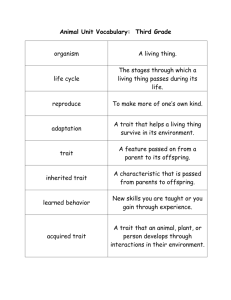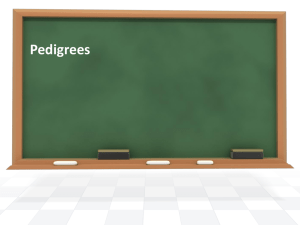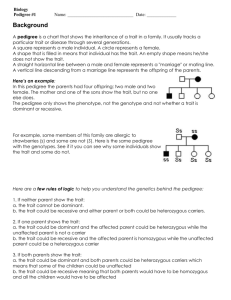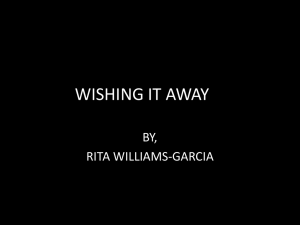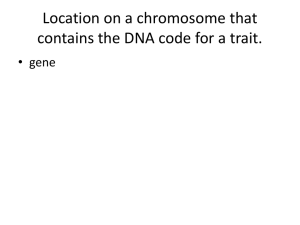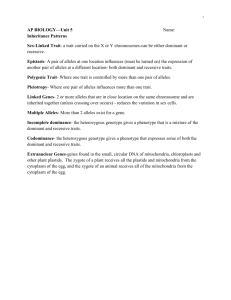Pedigree Worksheet
advertisement
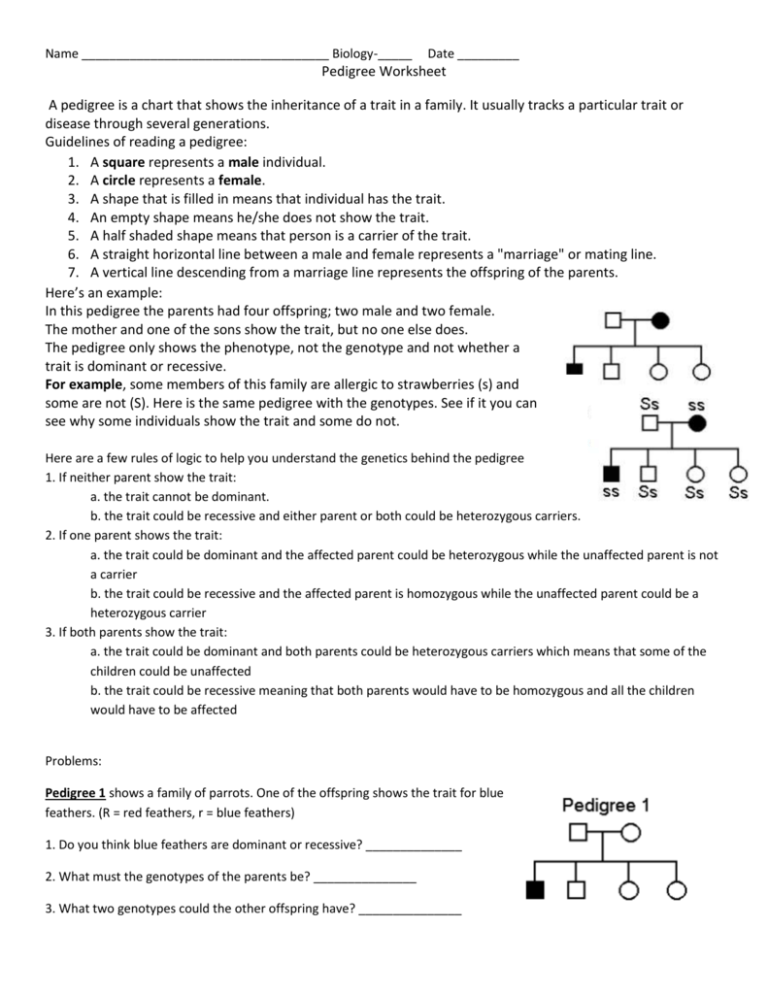
Name ____________________________________ Biology-_____ Date _________ Pedigree Worksheet A pedigree is a chart that shows the inheritance of a trait in a family. It usually tracks a particular trait or disease through several generations. Guidelines of reading a pedigree: 1. A square represents a male individual. 2. A circle represents a female. 3. A shape that is filled in means that individual has the trait. 4. An empty shape means he/she does not show the trait. 5. A half shaded shape means that person is a carrier of the trait. 6. A straight horizontal line between a male and female represents a "marriage" or mating line. 7. A vertical line descending from a marriage line represents the offspring of the parents. Here’s an example: In this pedigree the parents had four offspring; two male and two female. The mother and one of the sons show the trait, but no one else does. The pedigree only shows the phenotype, not the genotype and not whether a trait is dominant or recessive. For example, some members of this family are allergic to strawberries (s) and some are not (S). Here is the same pedigree with the genotypes. See if it you can see why some individuals show the trait and some do not. Here are a few rules of logic to help you understand the genetics behind the pedigree 1. If neither parent show the trait: a. the trait cannot be dominant. b. the trait could be recessive and either parent or both could be heterozygous carriers. 2. If one parent shows the trait: a. the trait could be dominant and the affected parent could be heterozygous while the unaffected parent is not a carrier b. the trait could be recessive and the affected parent is homozygous while the unaffected parent could be a heterozygous carrier 3. If both parents show the trait: a. the trait could be dominant and both parents could be heterozygous carriers which means that some of the children could be unaffected b. the trait could be recessive meaning that both parents would have to be homozygous and all the children would have to be affected Problems: Pedigree 1 shows a family of parrots. One of the offspring shows the trait for blue feathers. (R = red feathers, r = blue feathers) 1. Do you think blue feathers are dominant or recessive? ______________ 2. What must the genotypes of the parents be? _______________ 3. What two genotypes could the other offspring have? _______________ Pedigree 5 1. The pedigree to the right shows the passing on of colorblindness. What sex can ONLY be carriers of colorblindness? __________________________ 2. With this in mind, what kind of non-mendelian trait is colorblindness? ______________________ 3. Why does individual IV-7 have colorblindness? __________________________________________ 4. Why do all the daughters in generation II carry the colorblind gene? _________________________ 5. Name 2 IV generation colorblind males. _________
